Our Heritage
|
1912.The year 1912 was one of great personal significance for Alex Gray 1st in that it set his family’s course for a century. Alex, now twenty-nine, and two of his brothers incorporated the Gray Manufacturing & Machine Company Limited in September.The letterhead described the company as a “Manufacturer of steam and power pumps and special machinery”. |
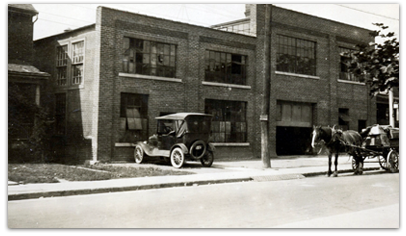
|
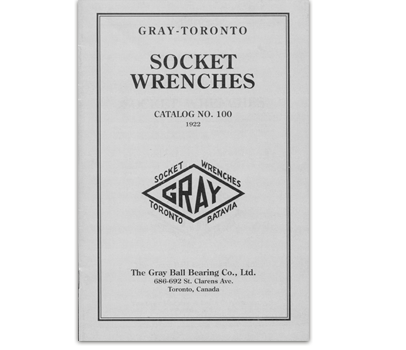 |
1920's.The first hand-tool catalogue was printed in 1922. There were two editions of the catalogue, which were identical except for the cover. The Canadian edition Gray-Toronto was issued by the Gray Ball Bearing Company Limited. The catalogue listed 302 different hand tools including sockets, wrenches, handles, extension bars, universal joints, and associated parts. In addition, many wrench sets were produced specifically for certain cars made at that time. Tool sets were packed in handsome hardwood boxes with a natural-stain finish and brass trimmings. |
|
1930's.To take advantage of the prosperity of the forties, the business had been gradually growing for many years, not only in technology and manufacturing expertise but also in physical space. In 1937, a single-storey addition was added to the west side of the factory. This increased the building size to 43,000 square feet so that it extended the full length of the city block. The company now had three street frontages and was at a main intersection serviced by two bus lines. This made it a site that employees and customers could easily access. |
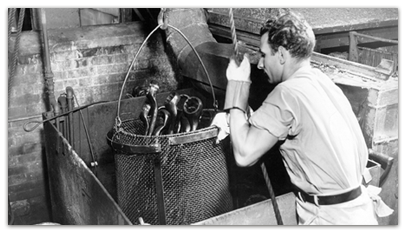
|
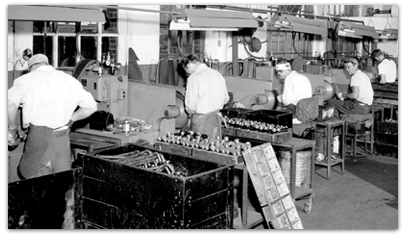
|
1940's.After ten years of decline and misery, Canada was pulled out of the Great Depression in 1939 by the Second World War.Hundreds of Canadian factories devoted their energy and resources to supplying the Allies with massive quantities of war material, and Gray-Bonney did the same. The Canadian Armed Forces became the single largest customer for the company, buying tools, machines, and other miscellaneous metal parts for military use. |
|
1950's.Gray Tools continued to expand with the catalogue now listing more than 1,800 items. To fill that need, a 17,000-square-foot, two-storey, cement-block warehouse was built in 1953, on the east side of St. Clarens Avenue directly across from the 1929 factory. |
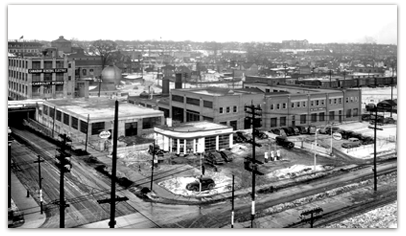 |
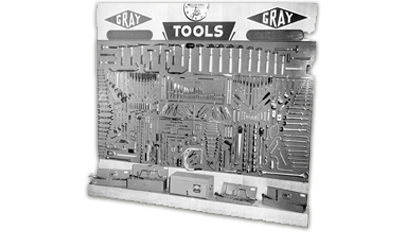 |
1960's.Peace and prosperity followed World War Two. Canadian factories and businesses had not suffered the devastation of bombardment. For the first time, several innovative marketing features were added to the Gray-Bonney line. The wrench sets were packaged for the first time in colourful cardboard boxes with cellophane wrapping. Also in stores now were multi-panel counter displays that mechanics could revolve to better see and touch the many different tools that were available. |
|
1970's.Due to increased customer demand the need for expansion became evident. The construction of the current Gray Tools facility in Brampton, Ontario took place throughout the winter of 1969 and the spring of 1970. One major improvement came in 1974 when a nickel-and-chrome electroplating line was purchased and installed. Although for many decades all of this work had been done by Industrial Electroplating, the increased factory space in Brampton made it more economical to have an in-house plating line. |
 |

|
1980's.In the early 1980s, Canada entered a new economic era defined by a revolution in information technology and globalization. Although always important, it was particularly necessary at this time for the company to try to differentiate itself from its competitors. A very effective way was by providing excellent customer service. Travel allowed C. Alex to establish a connection with customers that they rarely, if ever, had with another company or company president. Over the course of several decades, C. Alex journeyed all across Canada for at least two months of each year, visiting distributors in many cities, towns, and villages. |
|
1990's.As the demand for tool storage solutions increased Gray launched the PRO, GT and XL series of “Made In Canada” toolboxes. For the mechanic who needed to store many pounds of tools as well as hard hats, safety glasses, and other work-related objects, a larger and more substantial box was especially useful. So the box itself was made using heavy-gauge sheet metal, and the casters were made wider and larger to support the weight and to roll easily on the floor. Often, the box was sold as a set consisting of a bottom roller cabinet with a second, stepped-in top chest resting above. |
 |

|
2000's.In 1912, Gray Tools was the only company that manufactured a broad line of hand tools in Canada. In 2012, Gray Tools is still the only company that manufactures a broad line of hand tools in Canada. With over two hundred million tools manufactured and sold, the company has a proud history. The business standards of integrity and quality, the emphasis on customer service, and the respect for Canadian heritage have persisted unchanged for a hundred years. |

